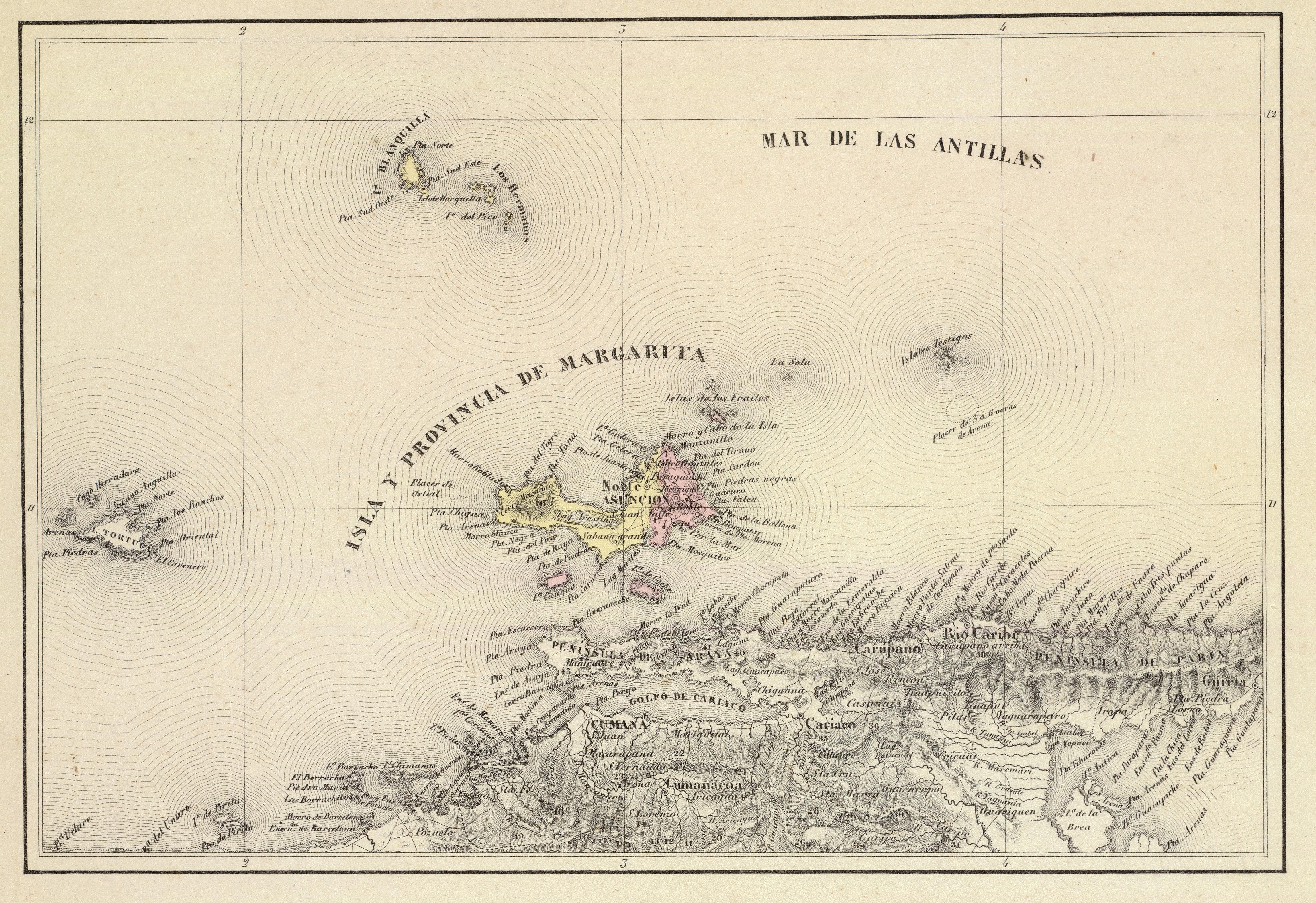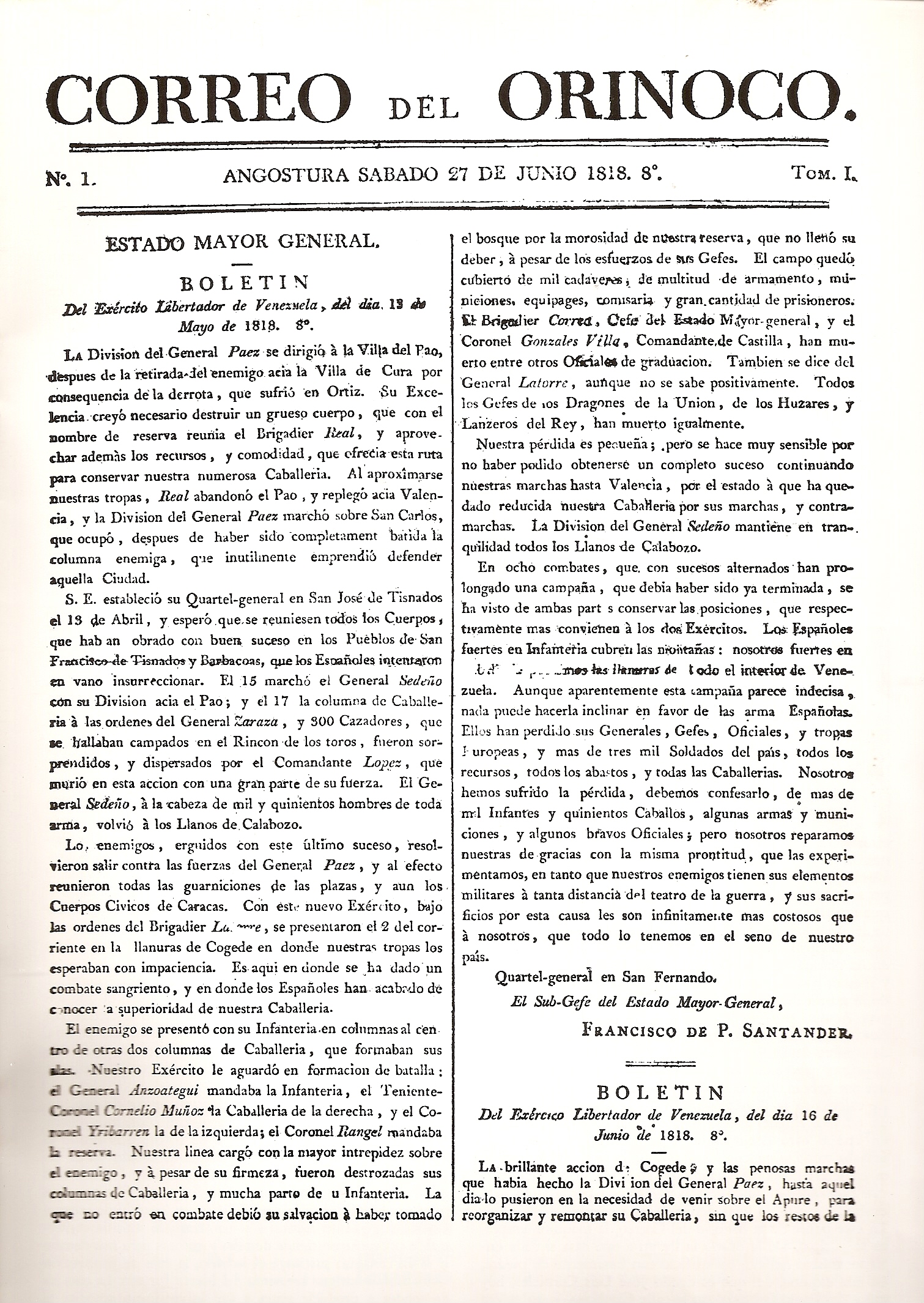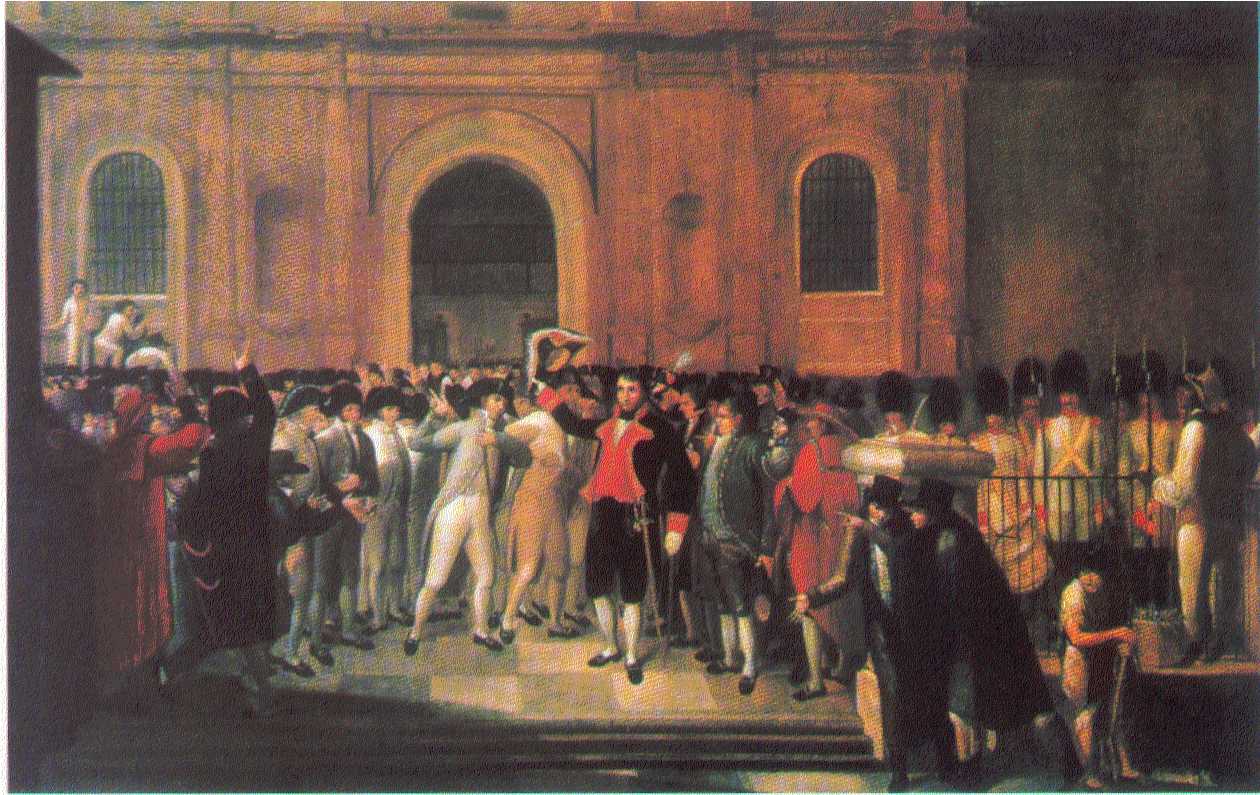|
Margarita Island
Margarita Island (, ) is the largest island in the States of Venezuela, Venezuelan state of Nueva Esparta, situated off the north west coast of the country, in the Caribbean Sea. The capital city of Nueva Esparta, La Asunción, is located on the island. History Age of Exploration Christopher Columbus was the first European to arrive on Margarita Island in 1498. The local natives were the Guaiqueries people. The coast of the island was abundant in pearls, which represented almost a third of all New World tribute to the Spanish Crown. Margarita Island was fortified against the increasing threat of pirate attacks, and some fortifications remain today. It was the center of Spanish colonial Margarita Province, established in 1525. In 1561, the island was seized by Lope de Aguirre, a notoriously violent and rebellious conquistador who killed the governor Juan Villadrando. Around 1675, the island was captured again, this time by Red Legs Greaves, a pirate known for his humanity and ... [...More Info...] [...Related Items...] OR: [Wikipedia] [Google] [Baidu] |
Caribbean Sea
The Caribbean Sea is a sea of the Atlantic Ocean, North Atlantic Ocean in the tropics of the Western Hemisphere, located south of the Gulf of Mexico and southwest of the Sargasso Sea. It is bounded by the Greater Antilles to the north from Cuba to Puerto Rico, the Lesser Antilles to the east from the Virgin Islands to Trinidad and Tobago, South America to the south from the Venezuela, Venezuelan coastline to the Colombia, Colombian coastline, and Central America and the Yucatán Peninsula to the west from Panama to Mexico. The Geopolitics, geopolitical region around the Caribbean Sea, including the numerous islands of the West Indies and adjacent coastal areas in the mainland of the Americas, is known as the Caribbean. The Caribbean Sea is one of the largest seas on Earth and has an area of about . The sea's deepest point is the Cayman Trough, between the Cayman Islands and Jamaica, at below sea level. The Caribbean coastline has many gulfs and bays: the Gulf of Gonâve, the Gul ... [...More Info...] [...Related Items...] OR: [Wikipedia] [Google] [Baidu] |
Gold
Gold is a chemical element; it has chemical symbol Au (from Latin ) and atomic number 79. In its pure form, it is a brightness, bright, slightly orange-yellow, dense, soft, malleable, and ductile metal. Chemically, gold is a transition metal, a group 11 element, and one of the noble metals. It is one of the least reactivity (chemistry), reactive chemical elements, being the second-lowest in the reactivity series. It is solid under standard temperature and pressure, standard conditions. Gold often occurs in free elemental (native state (metallurgy), native state), as gold nugget, nuggets or grains, in rock (geology), rocks, vein (geology), veins, and alluvial deposits. It occurs in a solid solution series with the native element silver (as in electrum), naturally alloyed with other metals like copper and palladium, and mineral inclusions such as within pyrite. Less commonly, it occurs in minerals as gold compounds, often with tellurium (gold tellurides). Gold is resistant to ... [...More Info...] [...Related Items...] OR: [Wikipedia] [Google] [Baidu] |
Colombia
Colombia, officially the Republic of Colombia, is a country primarily located in South America with Insular region of Colombia, insular regions in North America. The Colombian mainland is bordered by the Caribbean Sea to the north, Venezuela to the east and northeast, Brazil to the southeast, Peru and Ecuador to the south and southwest, the Pacific Ocean to the west, and Panama to the northwest. Colombia is divided into 32 Departments of Colombia, departments. The Capital District of Bogotá is also the List of cities in Colombia by population, country's largest city hosting the main financial and cultural hub. Other major urban areas include Medellín, Cali, Barranquilla, Cartagena, Colombia, Cartagena, Santa Marta, Cúcuta, Ibagué, Villavicencio and Bucaramanga. It covers an area of 1,141,748 square kilometers (440,831 sq mi) and has a population of around 52 million. Its rich cultural heritage—including language, religion, cuisine, and art—reflects its history as a co ... [...More Info...] [...Related Items...] OR: [Wikipedia] [Google] [Baidu] |
Venezuela
Venezuela, officially the Bolivarian Republic of Venezuela, is a country on the northern coast of South America, consisting of a continental landmass and many Federal Dependencies of Venezuela, islands and islets in the Caribbean Sea. It comprises an area of , and its population was estimated at 29 million in 2022. The capital and largest urban agglomeration is the city of Caracas. The continental territory is bordered on the north by the Caribbean Sea and the Atlantic Ocean, on the west by Colombia, Brazil on the south, Trinidad and Tobago to the north-east and on the east by Guyana. Venezuela is a presidential republic consisting of States of Venezuela, 23 states, the Venezuelan Capital District, Capital District and Federal Dependencies of Venezuela, federal dependencies covering Venezuela's offshore islands. Venezuela is among the most urbanized countries in Latin America; the vast majority of Venezuelans live in the cities of the north and in the capital. The territory o ... [...More Info...] [...Related Items...] OR: [Wikipedia] [Google] [Baidu] |
Military Career Of Simón Bolívar
The military and political career of Simón Bolívar (July 24, 1783 – December 17, 1830), which included both formal service in the armies of various revolutionary regimes and actions organized by himself or in collaboration with other exile patriot leaders during the years from 1811 to 1830, was an important element in the success of the independence wars in South America. Given the unstable political climate during these years, Bolívar and other patriot leaders, such as Santiago Mariño, Manuel Piar, José Francisco Bermúdez and Francisco de Paula Santander often had to go into exile in the Caribbean or nearby areas of Spanish America that at the moment were controlled by those favoring independence, and from there, carry on the struggle. These wars resulted in the creation of several South American states out of the former Spanish colonies, the currently existing Venezuela, Colombia, Ecuador, Peru and Bolivia, and the now defunct Gran Colombia. In his 30-year caree ... [...More Info...] [...Related Items...] OR: [Wikipedia] [Google] [Baidu] |
Second Republic Of Venezuela
The Second Republic of Venezuela () is the name used to refer to the reestablished Venezuelan Republic declared by Simón Bolívar on 7 August 1813. This declaration followed the defeat of Domingo Monteverde by Bolívar during the Admirable Campaign in the west and Santiago Mariño in his campaign in the east. The Republic came to an end in the following year, when Caracas was reoccupied by the Royalists on 16 July 1814, after a series of defeats at the hands of José Tomás Boves. Antecedents: Cartagena Manifesto After the fall of the first Venezuelan Republic, colonel Simon Bolivar went into exile and headed for Curaçao. Soon after, he set sail for the United Provinces of New Granada, which had just recently declared its independence from the Spanish Empire. In Cartagena, Bolivar penned a letter, the ''Cartagena Manifesto'', in which he described the reasons that led to the fall of the First Republic, the current situation of Hispanic America, and his perspective ... [...More Info...] [...Related Items...] OR: [Wikipedia] [Google] [Baidu] |
Simón Bolívar
Simón José Antonio de la Santísima Trinidad Bolívar y Palacios (24July 178317December 1830) was a Venezuelan statesman and military officer who led what are currently the countries of Colombia, Venezuela, Ecuador, Peru, Panama, and Bolivia to independence from the Spanish Empire. He is known colloquially as ''El Libertador'', or the ''Liberator of America''. Simón Bolívar was born in Caracas in the Captaincy General of Venezuela into a wealthy family of American-born Spaniards (Criollo people, criollo) but lost both parents as a child. Bolívar was educated abroad and lived in Spain, as was common for men of upper-class families in his day. While living in Madrid from 1800 to 1802, he was introduced to Enlightenment philosophy and married María Teresa Rodríguez del Toro y Alaysa, who died in Venezuela from yellow fever in 1803. From 1803 to 1805, Bolívar embarked on a Grand Tour that ended in Rome, where he swore to end the Spanish America, Spanish rule in the Amer ... [...More Info...] [...Related Items...] OR: [Wikipedia] [Google] [Baidu] |
Pablo Morillo
Pablo Morillo y Morillo, Count of Cartagena and Marquess of La Puerta, a.k.a. ''El Pacificador'' (The Peace Maker) (5 May 1775 – 27 July 1837) was a Spanish military officer who fought in the Napoleonic Wars and in the Spanish American Independence Wars. He fought against French forces in the Peninsular War, where he gained fame and rose to the rank of Field Marshall for his valiant actions. After the restoration of the Spanish Monarchy, Morillo, then regarded as one of the Spanish Army's most prestigious officers, was named by King Ferdinand VII as commander-in-chief of the Expeditionary Army of Costa Firme with the goal to restore absolutism in Spain's possessions in the Americas. Born to a peasant family in Fuentesecas, Spain, at the age of 16 he joined the Spanish Navy as part of the Spanish Marine Infantry, where fought in the Battle of Cape St. Vincent and the Battle of Trafalgar; both times he would be taken prisoner. After the outbreak of the Peninsular War, ... [...More Info...] [...Related Items...] OR: [Wikipedia] [Google] [Baidu] |
Juan Bautista Arismendi
Juan Bautista Arismendi (March 15, 1775 – June 22, 1841) was a Venezuelan patriot and general of the Venezuelan War of Independence. He is buried in the National Pantheon of Venezuela. Arismendi was born in La Asuncion, Isla Margarita i1775 He was a captain when the revolution broke out and took command of the patriots and drove the Spanish General Pablo Morillo from the island after a long conflict. He was one of the leaders that assembled a provincial congress at Angostura on 20 July 1817, and put at the head of the government a triumvirate of which Bolivar was a member. In 1819 he assisted Bolivar and Paez to drive Morillo from New Granada and from the greater part of Venezuela. In Bolivar's absence the Angostura congress forced Francisco Antonio Zea Juan Francisco Antonio Hilarión Zea Díaz (23 November 1766 – 28 November 1822) was a Neogranadine journalist, botanist, diplomat, politician, and statesman who served as Vice President of Colombia under then President ... [...More Info...] [...Related Items...] OR: [Wikipedia] [Google] [Baidu] |
Luisa Cáceres De Arismendi
Luisa ( Italian and Spanish), Luísa ( Portuguese), or Louise ( French) is a feminine given name; it is the feminine form of the given name Louis ( Luis), the French form of the Frankish Chlodowig (German Ludwig), from the Germanic elements ''hlod'' "fame" and ''wig'' "combat". Variations include Luisinha, Luisella, Luisana, Luisetta, Luigia, Luiza and Luisel. Its popularity derives from the cult of Saint Louise de Marillac of Paris, and from Giuseppe Verdi's opera '' Luisa Miller''. People with the given name Luisa * Luisa Accati (born 1942), Italian historian, anthropologist and feminist public intellectual * Luisa Cáceres de Arismendi (1799–1866), heroine of the Venezuelan War of Independence * Luisa Baldini, Anglo-Italian news reporter and presenter, presently working for BBC News * Luisa Bradshaw-White (born 1975), English actress * Luisa María Calderón (born 1965), Mexican politician * Luisa Capetillo (1879–1922), Corsican-Puerto Rican writer and anarchi ... [...More Info...] [...Related Items...] OR: [Wikipedia] [Google] [Baidu] |
First Republic Of Venezuela
The First Republic of Venezuela () was the first independent government of Venezuela, lasting from 5 July 1811, to 25 July 1812. The period of the First Republic began with the overthrow of the Spanish colonial authorities and the establishment of the Junta Suprema de Caracas on 19 April 1810, initiating the Venezuelan War of Independence, and ended with the surrender of the republican forces to the Spanish Captain Domingo de Monteverde. The congress of Venezuela declared the nation's independence on 5 July 1811, and later wrote a constitution for it. In doing so, Venezuela is notable for being the first Spanish American colony to declare its independence. History Antecedents Several European events set the stage for Venezuela's declaration of independence. The Napoleonic Wars in Europe not only weakened Spain's imperial power, but also put Britain unofficially on the side of the independence movement. In May 1808, Napoleon asked for and received the abdication of Ferdinan ... [...More Info...] [...Related Items...] OR: [Wikipedia] [Google] [Baidu] |






